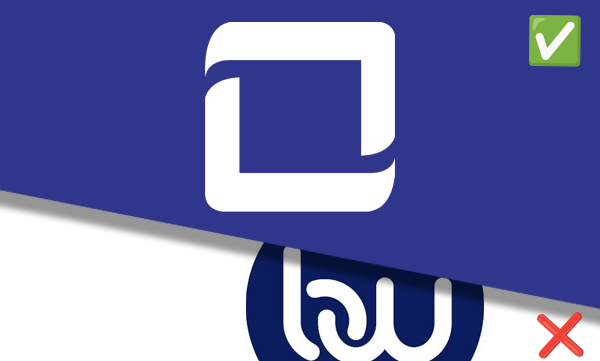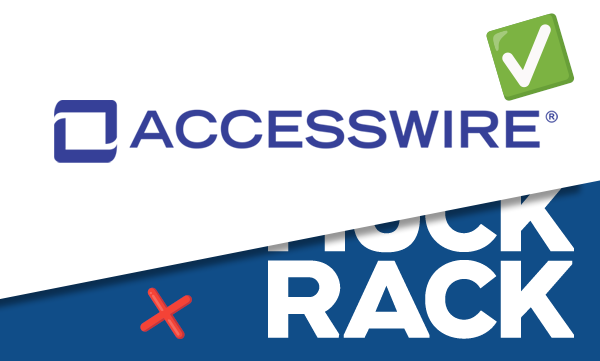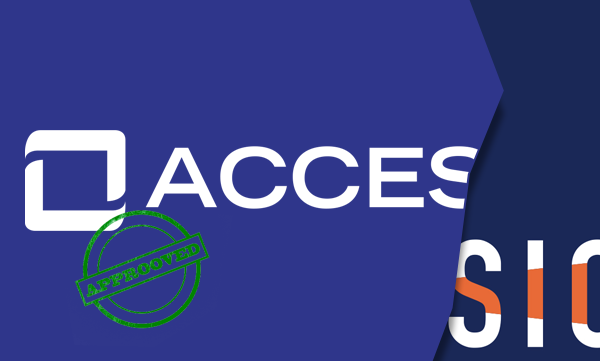A Guide to Creating a Brand Awareness Strategy
Do you have a favorite athletic shoe you usually buy? Or an airline you prefer whenever you travel? Do you ever switch your toothpaste to a kind you’ve never heard of? How about sodas – do you prefer one kind over another?
If you answered “no” to those questions, congrats – you are a unicorn! (Just joking...)
Usually, people find brands they like and stick with them. What most people call “preferences,” those of us in corporate communications refer to as “brand awareness.” In this article, we will provide a roadmap for developing a brand awareness strategy through understanding what brand awareness is and why it’s important.
Let’s get started.
Defining Brand Awareness
The ultimate goal in every public relations or marketing effort your business initiates should include one over-arching purpose: To make your target audience(s) aware of your company and its products and/or services.
That, concisely, is brand awareness.
As you may already be aware, brand awareness is elusive for many companies around the globe, mostly because the metric of measurement itself isn’t easily defined. Additionally, it is uncommon for communicators to know how long it will take before reaching a high level of brand awareness either in a specific industry or publicly.
The familiarity factor can be obtained. Once you understand how brand awareness can positively impact your business, you can begin to create your PR and marketing communications strategies.
Why Brand Awareness Is So Important
Returning to your own consumer practices, consider what determines your decision to make a purchase.
Do you rely on the opinions of others who have previously purchased the item? Do you rely on ratings provided by experts before buying? Are you swayed by paid advertising? Are you influenced by a family member or friend’s previous experience or opinion (i.e., word-of-mouth)?
Most likely, you would use at least one of the above scenarios, or a combination of them – and perhaps a few more not mentioned. Every person makes purchasing decisions differently.
Whatever methodology is used, however, there is a truism, when it comes to purchasing goods or services: Brand awareness factored into the decision somehow. Let’s look at the reasons why brand awareness is so important.
1. Why Brand Awareness Is So Important
When a consumer has a good experience with a service or product, studies have shown that they are highly likely to become a repeat customer or make recommendations to others. When this happens, a brand becomes a trusted supplier to that customer.
2. Brand awareness increases service / product equity.
Think of equity in terms of home ownership. When a house develops equity, that means its value has increased. Apply that theory to a service or product; the equity is earned when the number of consumers increases.
3. Associations are created through brand awareness.
Back in the “olden days,” grade school students used encyclopedias as reference materials for homework assignments. Thanks to the advent of the worldwide web, today’s students only need to Google something on their computers or phones to look up information.
Did you notice that Google was used as a verb in the previous sentence, instead of a noun? We don’t “search engine” to obtain information… we Google it.
That’s what’s known as a brand association. According to Bizfluent.com, there are three kinds of brand associations:
- Attribute Associations – Links that are created from a “descriptive feature that characterizes a product or service.” One example would be of a wedding couple receiving a high-end wedding gift that comes in the famous Blue Box, linked to the Tiffany & Co. branding. Other examples may include actions that an item can take; in the UK, people refer to the act of vacuuming as “Hoovering,” which links back to the vacuum manufacturer, Hoover.
- Benefit Associations – This describes the link between a personal value or positive meaning a brand can provide to consumers. One example of a benefit association is the story of Men’s Wearhouse. Founder George Zimmer first appeared in commercials in 1985 and used the catchphrase "You're going to like the way you look. I guarantee it." Customers apparently did like the way they looked – during his 40 years as the company’s leader, Zimmer’s single Texas clothing store exploded into a multi-billion dollar corporation with more than 1200 locations.
- Attitude Associations – This brand awareness creation relies on a particular lifestyle that a product or service links to. What would Nike look like without its superstar athletic spokespeople like Michael Jordan and Tiger Woods? Would Aveeno be as popular without the commercials featuring Jennifer Aniston, who appears to never age? What about William Shatner’s endearing endorsements of Priceline, or Matthew McConaughey driving Lincoln Motor Company cars that look as cool as he is?
Tips On Building A Solid Brand Awareness Foundation
- Be patient and consistent.
Brand awareness does not happen overnight, or within one or two advertising and marketing campaign(s). Instead, brand awareness happens as a result of consistent, unified messaging across all communications channels, including press release distribution and media coverage. - Give your company its own personality.
In order to make an impression on your target customer base, you need to offer something more meaningful than just being a company that wants their business. Make sure your audience knows what your company stands for, what its social interests are, what your business’s work culture is, and how its leadership team operates. - Get ready to socialize online and in person.
You need to introduce your company in several ways, other than during the sales pitch. Obviously, inviting conversation with and about your company on social media platforms is expected. A global study by Weber Shandwick and Forbes Insights showed that 50% of brand reputation comes from being socially active online.
Making sure you continue to present your company to local media outlets is important, too. Press release distribution to your business’s immediate locations, as well as state and regional outlets, is also important. Participate in your community’s events and fundraisers and invite the press to cover your company’s public interactions. - Use storytelling to tell the world about your company’s brand.
In previous articles, we have extolled the virtues of storytelling, and its importance in raising brand awareness, and a great way to start telling your company’s story is by developing a press kit. Having an informative and thorough press kit allows you to control the narrative and lead people through a deep dive of your company. Press kits play a vital role in creating a solid brand awareness strategy. - Make sharing your company’s story easy to do.
Back in the mid- to- late 1970s, an up-and-coming guitarist actually encouraged people to share bootlegged concert recordings of his band’s shows with others. By allowing for the free sharing of his musical brand, this singer and songwriter created a grassroots fan base that ended up expanding to other continents.
This artist’s name is Bruce Springsteen, leader of “the heart-stopping, house-rocking, earth-quaking, booty-shaking, LEGENDARY E Street Band.” To this day, he has one of the most loyal fan bases in the entertainment industry.
You can create your own version of cost-free sharing about your company. Blogs, branded content (like videos, social media posts, downloadable white pages, and/or product pages) are some of the easiest ways for you to share your company’s news. All you have to do is encourage your audience to share your company’s story with their audiences, so that your customers can increase brand awareness for you.
Creating A Brand Awareness Strategy
The business of building brand awareness creates an opportunity to make a lasting impact. Now that you understand what brand awareness is and what it can do for your company, now it’s time to create a strategy. Below are the necessary steps to help you form a strategy.
1. Create guest blogging opportunities.
When it comes to increasing brand awareness, guest blogs benefit both your company and the websites with which you share your content. It’s also a great way to control the narrative about your company, while also taking advantage of the opportunity to position your business as an industry leader.
2. Create marketing partnerships.
There is strength in numbers, particularly when it comes to raising brand awareness. There are a number of ways to form partnerships. Try co-sponsoring in-person events, having an affiliation with apps (i.e., “Download this app and receive 10% off your first purchase…”), creating co-branded videos, offering a webinar on a topic of interest to your target audience, and so forth.
3. Give your brand a persona.
Whether it’s someone within your business’s leadership, an advertising spokesperson, or a drawn and/or animated mascot, providing a face to represent your company helps. The face works to deepen the connection your target audience feels between themselves and your company’s brand. When using a persona for brand recognition, make sure that face appears in as many places as possible, right alongside your logo – and speaking of logos...
4. Design a unique logo… and protect it.
The biggest mistake many companies make is approving a logo that resembles another one. Think of the “Nike Swish” logo… has there ever been one, before or since, that looks like it? What about Apple’s bitten, multi-colored logo? These are prime examples of logos done right.
Under all circumstances, your logo should reflect either an idea or a part of your industry. Even for small businesses, having a new logo professionally created is worth the money when the design is unique and fresh. Be sure to copyright a logo, too, so that other companies can’t use your design to represent their company.
5. Create a short, memorable, and unique tagline and/or slogan.
Taglines are a short motto or phrase, and slogans are a tad longer, but using either can help to building brand awareness.
Examples of effective slogans and taglines include “Just Do It,” “A Diamond Is Forever,” “What’s In Your Wallet?” “Snap! Crackle! Pop!,” “Finger Lickin’ Good,” and “They’re GRRRREAT!” In fact, they are so good, we bet you know which brands are associated with those examples.
Creating taglines or slogans doesn’t have to be hard, but it DOES need to be unique to your company or industry, just as logos should.
One Last Thing...
As soon as you have finished creating your company’s brand awareness strategy, you should begin sharing as much information about your company as possible, infusing elements of your brand through as many press release distributions as possible. When you are ready, ACCESSWIRE is here to help. To get a quote or watch a complimentary demo of our platform, click here.
Similar Blog Posts



PRODUCTS
ACCESSWIRE | All Rights Reserved

